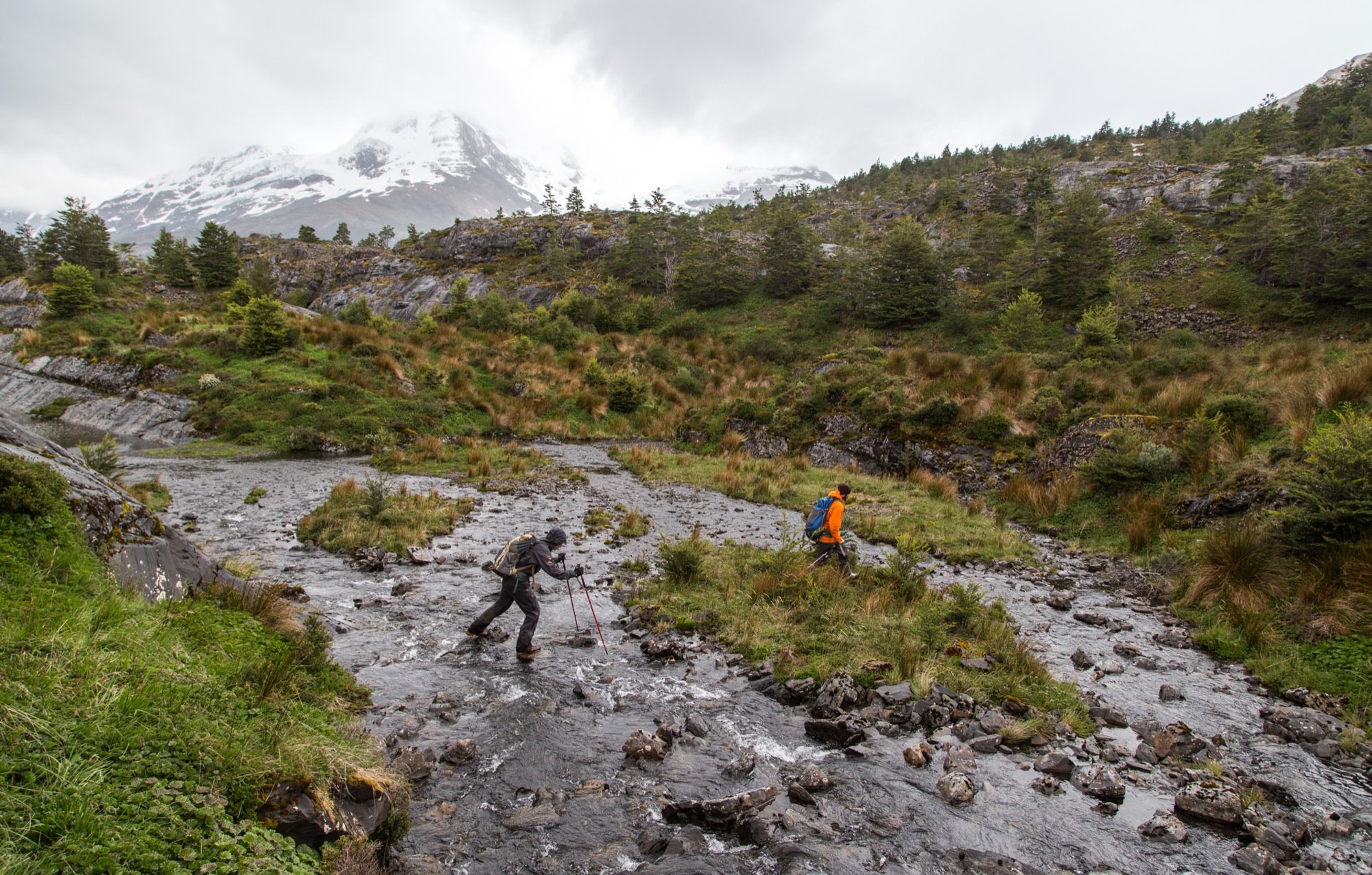12 Secondary Uses For Trekking Poles

Story and photo By Eric Larsen
I’ve got a few basic philosophies when it comes to gear selection for any of my adventures. First and foremost, I look for equipment that is the perfect combination of strength, weight, reliability and repairability. Depending the adventure I might opt for lighter weight gear versus more repairable gear; however, there is one basic characteristic that supersedes nearly all everything else and that is… Drumroll please… versatility.
More often than not, I can save weight, be more efficient and even travel safer when my gear functions in a variety of ways.
While items like MSR’s Titan spoon are specifically designed for alternate uses, few items compare to the overall versatility of trekking poles. Over the years, I’ve been in a lot of remote places and I am continually surprised in the variety of ways in which they are useful. Some of which I’ve attempted to detail here:
Communication. During polar expeditions, we often travel out of earshot from one another. Strong winds, longer distances and intense cold make verbal communication nearly impossible as well. Therefore, we rely heavily on our trekking poles to signal to one another. Two poles held out horizontally means ‘all ok’. Two poles held in an ‘x’ above your head means break time. Two poles held straight above your head or waiving back and forth means ‘I have a problem come help immediately.’
Ice axe. In mountaineering situations where we are traveling up slopes less than 45 degrees, I often use a single pole similarly to how I would an ice ax on a steeper slope. The trekking pole provides a third point of stability and can also be used in a self arrest as well.
Dead man / tent stake. In mountaineering situations, we are always trying to be economical with the our weight. Therefore, we often burry trekking poles in the snow to use a dead mans. In really deep snow we sometimes just push the grip down into the snow to use as a stake or guy out point as well.
Depth gauge. Snow, water, whatever. Several years ago on an expedition, I was conducting ice thickness research for the National Snow and Ice Data Center. I glued a tape measure to my trekking pole and when I would encounter a crack in the ice, I simply used the trekking pole like a ruler to measure the ice. Regardless, I often find myself in situations where I need to determine how deep the water or snow is in a given location.
Tent pole. I’ve built more than my fair share of tarp shelters with trekking poles. I have also become fairly adept over the years at using trekking poles to perfectly sculpt the roofline of a shelter so that no pools of rain form. Of course, the MSR Front Range™ tarp is perfectly suited to be used with trekking poles.
Flag pole. Sometimes on expeditions we carry sponsor flags. Do I need to explain this more?
Laundry. Use a trekking pole to wring out a wet sock by twisting a folded sock while you hold the ends together (think rubber band propeller on toy plane) and you’ll wring out a surprising amount of water and decrease your drying time substantially. Equally useful is draping wet clothes or gloves on the ends of your trekking pole.
Pole vault. On a recent scouting mission to Patagonia we were faced with water crossing after water crossing after water crossing. Not wanting to get my feet wet, I would take a running jump at the stream then plant by poles firmly in the river bed and then catapult forward the rest of the distance. It’s not a pretty technique by any stretch, but I get a couple of extra feet of horizontal distance by levering off my poles.
Ice thickness. During Arctic adventures, crossing thin ice is a constant danger. Before stepping on any ice or snow that appears unsafe, we give three quick and firm pokes with our trekking poles. If the tip doesn’t break through the ice to the water below, it’s safe. Of course, we also use this technique for snow bridges during glacier travel.
Crutches. In 2008, I had minor knee surgery right before heading to Moab for a little desert adventure. I couldn’t really bend my knees or put all my weight solely on either one of my legs so I hobbled over the sandy trails and rocks using my trekking poles as backcountry crutches. Last spring on the Arctic Ocean that same knee that had gotten ‘fixed’ so many years early got reinjured on the way to the North Pole.
Splint. I’ve never had to use my trekking poles as a splint or to create a litter or travois (a type of dragging sled built with two poles), but the knowledge is in my wheelhouse and in a pinch I could throw down with some pretty ingenious rescue / medical hacks.
Polar bear deterrent. In 2005, my expedition partner and I were waiting in a tent for 10 days for a Russian helicopter to pick me us after failed North Pole attempt. Around day seven, a polar bear meandered into camp coming within just 30 feet off our tent. We shot off a couple flares to scare it away, but knowing we were going to be in the same area for several more days, I chased after the bear waving my poles back and forth to ensure it wouldn’t come back.
And then there’s this. No explanation needed.
